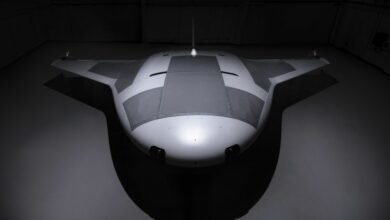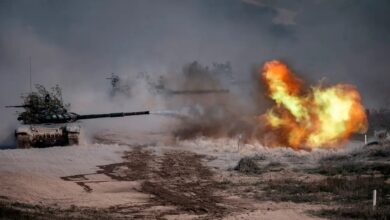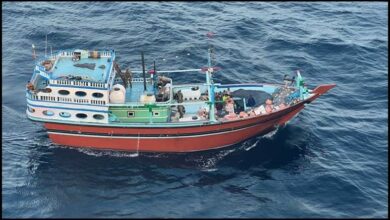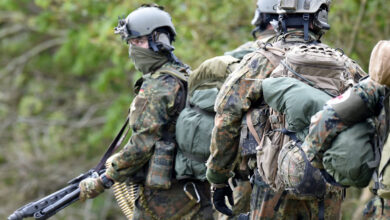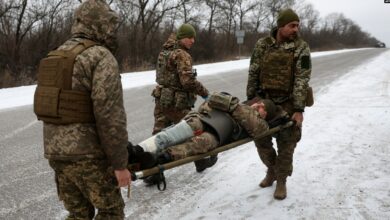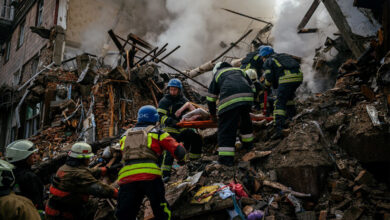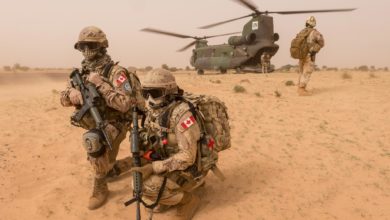
On the day Russia invaded Ukraine, Reuters published an editorial titled “Putin launches a war the West saw coming but was powerless to stop,” which chronicled Russian President Vladimir Putin’s seemingly unstoppable march toward war.
The White House, aware of Putin’s plans well in advance, warned of his determination to invade Ukraine — but the threat of “dire consequences” and a “terrible price” lacked specifics about what those consequences would be beyond the kind of economic sanctions imposed after Russia’s 2014 annexation of Crimea.
The sanctions imposed after February 24 came more swiftly and were far more punishing than anyone, Putin included, had foreseen. But the fact that he didn’t see them coming – that the West, knowing his determination to invade Ukraine, was unwilling to deter him – is one of the West’s greatest policy failures.
The United States and its NATO allies were not powerless to stop the war in Ukraine. They lacked preparation and coordination. Many things could have been done, short of military confrontation, to contribute to deterrence.
Low-Risk Gray Zone Activities
Western democracies need to get better at low-risk gray zone activities practiced by their ideological adversaries.
Foreign policy analysts differ on some details of what constitutes gray zone activity. Generally, they agree that it involves the pursuit of geopolitical objectives through carefully designed operations below the threshold of armed conflict, using all instruments of national power.
These mainly include non-military and non-kinetic tools such as cyber warfare, economics, the manipulation of territorial borders, migration, information operations, psychological warfare, or measures to weaken an adversary.
Russian and Chinese Gray Zone Tactics
In 2014, for example, in Ukraine’s Donbas region, the efforts of Ukrainian forces to disrupt enemy supply lines were thwarted by aerial drones that cloned cellular networks, located active cellphones, and disabled Ukrainian command-and-control systems.
Ukrainian forces have also been vulnerable to attack from Russia’s “little green men” – soldiers without insignia on their green uniforms to create deniability (however implausible) about their origins.
China is also adept at gray zone tactics.
To press its territorial claims in the South China Sea, Beijing is not only building new islands and claiming them as territory; it deploys a massive fleet of “little blue men” in fishing boats and merchant vessels, a maritime militia that harasses and exhausts adversaries in contested areas.
Authoritarian Regimes and Gray Zone Warfare
These activities have proliferated as a way to avoid provoking American military might. The day before Russia’s Ukraine invasion, the Atlantic Council published an article exploring why authoritarian governments are often better at gray zone warfare than liberal democracies.
Their centralized lines of authority allow them to execute operations instantly. For example, they can buy influence in Africa by funding infrastructure projects with cash – a process that would take months, if not years, to wind through American bureaucracy.

Authoritarian governments are also better at thinking in non-binary terms such as victory/defeat or war/peace.
The fleet of Chinese dredging ships stealing sand from Taiwan’s Matsu Islands is not deployed to “win” anything but to annoy, distract, and wear down Taiwan’s coast guard.
So, what should be done in the future?
Sanctioning Strategies
As a result of the Ukraine conflict, Western nations’ ability to deter authoritarian regimes may be strengthened. Russia calculated that economic interests would prevent European countries from joining a strong sanctioning effort.
Would-be aggressors now know that their dream of fracturing the alliance is just that – a dream.
This new reality offers the West the opportunity to craft and “preposition” laddered sanctioning strategies to deter future aggressors. By taking such swift and unified action against Russia, democratic nations have shown they are willing to act.
As a result, aggressors must now figure that proven willingness into their future calculations.

Efforts such as Task Force KleptoCapture, the US Department of Justice unit established in mid-March to enforce sanctions on Russian oligarchs, need to be permanently institutionalized and adequately funded.
Oligarch supporters of authoritarian regimes need to know, with a high level of assurance, that they will eventually lose their ill-gotten assets.
Troop Rotations, Military Training
On the European front, the US needs to look at much larger troop rotations. The levels need not reach those of the Cold War, but they need to be substantially higher than the current program calls for.
When deployed, they should be stationed at forward bases in NATO’s newest member countries. Although the idea is likely to meet resistance, serious consideration needs to be given to closing older US bases, particularly in Germany.
New facilities can be built relatively inexpensively in NATO’s forward-facing nations. Additional offsetting savings would also be realized through lower ongoing costs.
Lessons learned on the Ukrainian battlefield need to be rapidly integrated into military training and future joint exercises. A legal framework needs to be worked out to permit the US Special Operations Command to engage in “next-level” irregular warfare instruction, including resistance training, city-level militias, and civil disobedience.
Weapons and Tactics
After evaluating their performance in Ukraine, portable weapon systems such as Javelins, Stingers, NLAWs, and drones should be prepositioned in potentially threatened countries, along with defensive systems such as the truck-based Sky Sabre systems the UK sent to Poland.
#Ukraine: The Ukrainian Army destroyed another T-72B3 tank, claimed to be with a Javelin ATGM. This time the turret merely shifted a little. pic.twitter.com/U2LnIQVQ7n
— 🇺🇦 Ukraine Weapons Tracker (@UAWeapons) March 30, 2022
Encrypted tactical communications gear and other counter-jamming capabilities, which have become increasingly important as drones have become indispensable defensive assets, will likely also be in high demand.
Military tacticians from Sun Tzu to Napoleon to Dwight D. Eisenhower have been fond of talking about the importance of logistics. The West’s lack of a sound logistics strategy to support a NATO-adjacent democratic nation has created a deadly bottleneck.
I recently returned from Lviv, Ukraine, where I met with several government agencies, including the Ministry of Strategic Industries. I witnessed a small cadre of smart, tough, tireless, and committed Ukrainians trying to piece together a plan to move massive amounts of inbound aid to the front.

Warehouses were filling up, and the equipment needed to move it to the front was already fully committed. One of the most important lessons from the current conflict is that Western allies must develop and stress-test a logistics system designed to efficiently move material support to a defending nation without triggering conflict escalation.
New Global System of Deterrence
Democracy’s adversaries will always probe, exploit the gray zone, and resort to outright aggression if they sense an opportunity.
Since the fall of the Berlin Wall, western democratic nations have let their guard down, and as a result, Ukraine is paying a terrible price.
The challenge ahead is creating a new global system of deterrence that can be clearly understood by aggressors and promises to inflict a level of pain that they deem unacceptable.
 Dominique L. Plewes (@DomLPlewes) is a special advisor to the Freedom Research Foundation and founder of 501(c)3 Special Operations Forces (SOF) Support Foundation, dedicated to educating Americans on the purposes and uses of our special operations forces.
Dominique L. Plewes (@DomLPlewes) is a special advisor to the Freedom Research Foundation and founder of 501(c)3 Special Operations Forces (SOF) Support Foundation, dedicated to educating Americans on the purposes and uses of our special operations forces.
The views and opinions expressed here are those of the author and do not necessarily reflect the editorial position of The Defense Post.
The Defense Post aims to publish a wide range of high-quality opinion and analysis from a diverse array of people – do you want to send us yours? Click here to submit an op-ed.



